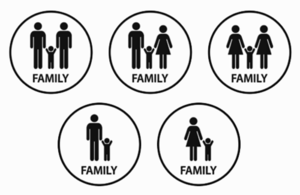Today’s guest post is Rachele Willy.
ABC News shared an article entitled “Same-Sex Adoptions Next Frontier for LGBT Advocates,” which can be found here and looks at barriers for same-sex couples to adopt throughout the United States. Only 19 states and the District of Columbia permit same-sex couples to adopt jointly, 13 states and D.C. allow second-parent adoptions, and 6 states explicitly ban discrimination based on sexual orientation in foster care. These low numbers impact many LGBT families throughout the country. The Williams Institute at UCLA found that “same-sex couples with children are four times more likely than their heterosexual couples to be raising an adopted child and six times more likely to be raising foster children.” The Williams Institute also found that about 6 million U. S. children are being raised by at least one LGBT parent. The article points out that while children should be the primary focus, laws in place to limit and prohibit LGBT families to adopt actually hurt them more because it eliminates quality, potential parents (James, 2013).
The article acknowledges the perspective of Focus on the Family, a Christian ministry that believes children need both a mother and father in order have the best emotional, psychological and physical wellbeing. However, studies have shown that “children raised in LGBT families fare as well as in heterosexual families” (James, 2013). The article also highlights Allies for Adoption, a campaign sponsored by the Family Equality Council to remove barriers to adoption for LGBT people throughout the United States. Additionally, James highlights two LGBT families impacted by the laws discussed. Issues discussed include only one parent being able to adopt, only one parent being put on the birth certificate, and the inability to place a child on their parent’s health insurance policy because they are not the legal parent.
This article successfully highlights various laws throughout the United States, as well as the impact that they have on American families. By sharing the experiences of two families, James sheds light on what those specific impacts look like. It successfully expands the scope of reference to include second-parent adoptions and foster care. The author could have explored barriers to LGBT families attempting to adopt children through kin relationships as a way to support their family and community, especially as the article highlights the number of children in foster care awaiting permanency. This article also dispels myths about LGBT families being unable to provide adequate homes for children, showing that children in these settings have similar outcomes to their heterosexual counterparts. Citing specific research to support this point, rather than general themes, could have strengthened the argument.
Gabriel Blau, the executive director of the Family Equality Council, eloquently communicated these points when he stated “Right now there are children waiting to find a forever family, and until we knock down barriers to adoption by LGBT people in every state, we are failing them as a nation” (James, 2013).
